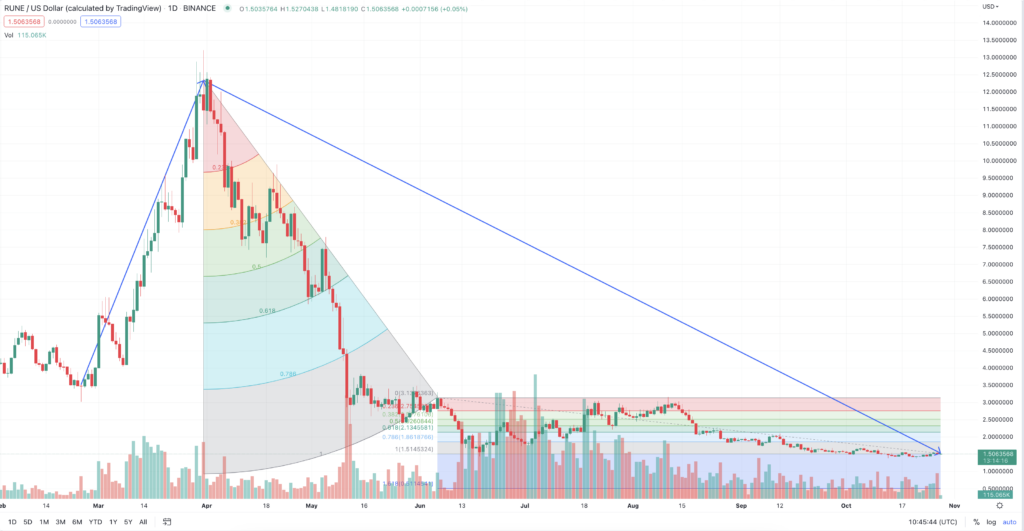THORChain (RUNE/USD) was halted on October 27, 2022, due to a software bug.
THORChain, a blockchain network built on top of Cosmos (ATOM/USD), is essentially a decentralized liquidity protocol that allows users to trade cryptocurrencies across multiple networks in a non-custodial way.
THORChain outage and software bug
When we go over the latest crypto news, on October 27, 2022, the THORChain team announced on Twitter that they were aware of a chain halt and identified the likely cause and indicated that this is due to a unique transaction type and that it had nothing to do with solvency.
They also announced that they would post an update as soon as there is more confirmed information.
Then on October 28, 2022, they posted an update, noting that the consensus issue is clearly understood and that they are shipping a patch. This turned out to be a string manipulation, where the code pushed a cosmos unit instead of unit64 into a string.
This causes the string to get the point of the big int instead of the actual value and causes the memo string to be different on different nodes.
Should you buy THORChain (RUNE)?
On October 28, 2022, THORChain (RUNE) had a value of $1.506.

The all-time high point of value for the THORChain (RUNE) was on May 19, 2021, when the cryptocurrency reached a value of $20.87. Here we can see that RUNE was trading $19.364 higher in value, or by 1,286%.
When we go over its 7-day performance, THORChain (RUNE) had its low point of value at $1.40, while its high point was at $1.59. Here we can see that the cryptocurrency increased in value by $0.19 or by 13%.
Going over its performance in the last 24 hours, THORChain (RUNE) had its low point at $1.49, while its high point was at $1.57. This marked an increase in value of $0.08 or by 5%.
With all of this in mind, investors might want to buy RUNE as it can climb to $1.8 by the end of November 2022.
[ad_2]
Image and article originally from invezz.com. Read the original article here.

